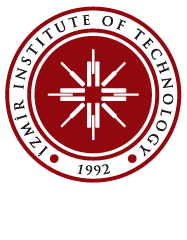Curriculum
CORE COURSES
Program of research leading to MSc degree, arranged between a student and the faculty member. Students register to this course in all semesters starting from the beginning of their second semester while the research program or write-up of the thesis is in progress.
Fundamental issues and concepts in the management of engineering, technology and innovation. Management of technology and innovation at the level of technologies, industries, firms, projects, and nations. Evolution of technologies. Technology transitions from technical, economic and social perspectives. Technology and industry life-cycles. Intellectual property systems and appropriable regimes. Introduction to product development and project management. Project evaluation. National innovation systems.
Customer characteristics, need analysis, competitor analysis, market potential and forecasting, planning, product strategy, financial analysis, products design, R&D plan, evaluation, development, process & program management, risk analysis, pricing, promotion, channel management, service quality
Research question, ethical issues, framework and hypothesis development, research method selection, design, data collection and analysis of qualitative methods, design, data collection and analysis of quantitative methods, triangulation, interpretation, research writing
Seminars by faculty, guest speakers and graduate students designed to widen students’ perspectives on specific topics of interest and to expand their range of scientific research techniques and publication ethics.
M.S. Students choose and study a topic under the guidance of a faculty member normally his/her advisor.
ELECTIVE COURSES
Organizational aspects of Research and Development (R&D), including research at national labs, industrial labs and universities. Teamwork, leadership and creativity. Evaluation methods and multi objective analysis for R&D project selection. Integration of research and development functions, project management challenges resulting from uncertainties in R&D, and the difficulties in measuring on-going R&D outputs. Methods of Technology Assessment and Technology Acquisition as part of a venture’s R&D program, including evaluation attributes and methodologies, impacts and impact relationships, and technology diffusion from individual, organizational, technical and market perspectives.
Contemporary methods and practice of Technology Forecasting and Technology Roadmapping. Study a comprehensive set of tools to address the future of key technologies and their development, help understand technological and industrial landscapes in a given field of technology, and allow expected technological developments to be integrated into business planning and strategy. The development and evolution of technology. Working with data. Expert methods. Tools of applied statistics for forecasting, regression analysis and time series. Scenario development. Technology development envelopes. Developing Technology Roadmaps.
Strategic Marketing Framework, Market orientation, technology value chain, Market Opportunities, demand Forecasting, Delivering Customer Solutions, Products and services, Technology markets and communication, Pricing decision, Value Propositions, Brands and Customer Experiences, Strategic Market Segmentation, Growth and Evolution
Working with data. Univariate and multivariate statistics. Data mining. Classification and regression methods. Multi-criteria decision making. Analytic Hierarchy Process. Simulation methods.
Potential users need definition and product conception, diffusion of innovation, design process, strategic planning, Concept generation, Creativity and product idea, Idea generation techniques, Brainstorming studies, Analytical tools, Product protocol, technology acquisition, Market and demand analysis, Product launch planning and assessment.
The product development process from the creation of ideas till development stages, with a focus on developing profitable products in technology oriented companies. Identifying product requirements and specification, product architecture decisions, prototyping, and Design-for-X methods. Technology integration, disruptive technologies, concurrent engineering, and creating innovative environments. Students develop a plan for a new product including risk assessments in areas such as manufacturing, design, and testing.
Managing uncertainty and innovation project management, strategy alignment and program management, feasibility analysis, roadmaps and tools, estimating and planning time and cost, monitoring, stakeholders, resource allocation, organization and human capital, quality and risks, suppliers, communication, information systems, project closing
Structure and competitive dynamics of technology driven industries. Resource and knowledge based frameworks for competitive advantage. Analysis of corporate, international and global strategies for technology driven ventures. Frameworks for identifying and implementing strategies for standard setting and design choices, timing of entry, the choice of innovation projects, strategic decisions in collaboration, openness and protection.
Business opportunity identification, assessment, validation, product-market match, entrepreneurial motivation, risk behavior, business models, business canvas, road mapping, funding source, venture capital, supplier and partnership, entrepreneurial role and identity
The time value of money, equivalence, annuity and rate of return, methods for cost estimation, capital budgeting, sensitivity analysis and dealing with uncertainty. Evaluating the feasibility and performance of a project over its life cycle. Methods for choosing among alternative options. A business simulation game is used throughout the course to gain a better understanding of financial decision making.
Economic analysis of technology-based industries. Analysis and discussion of competition. Industry and technology life-cycles. Economics of technology diffusion and substitution processes. Economics of network industries. R&D choices in a competitive market setting. Competition and collaboration in innovation.
Creative strategy, individual and group creativity, creativity in problem solving, scamper method, semiotic and creativity
Client and agency relationships and organizational structure, targeting consumers, consumer needs and motivations, advertising objectives, develop relevant messages and creative development, production, media planning, advertising strategies
The sign, semiotic analyze of product design, first and second order of signification, metaphor, semiotic of figurativity and rhetoric, using sign systems in design
Service design methods, designing services, creating concepts, analyzing and understanding service design, customer experience and behavior
Total credit (min): 21
Number of courses with credit (min): 7
Total ECTS credit (min): 120
